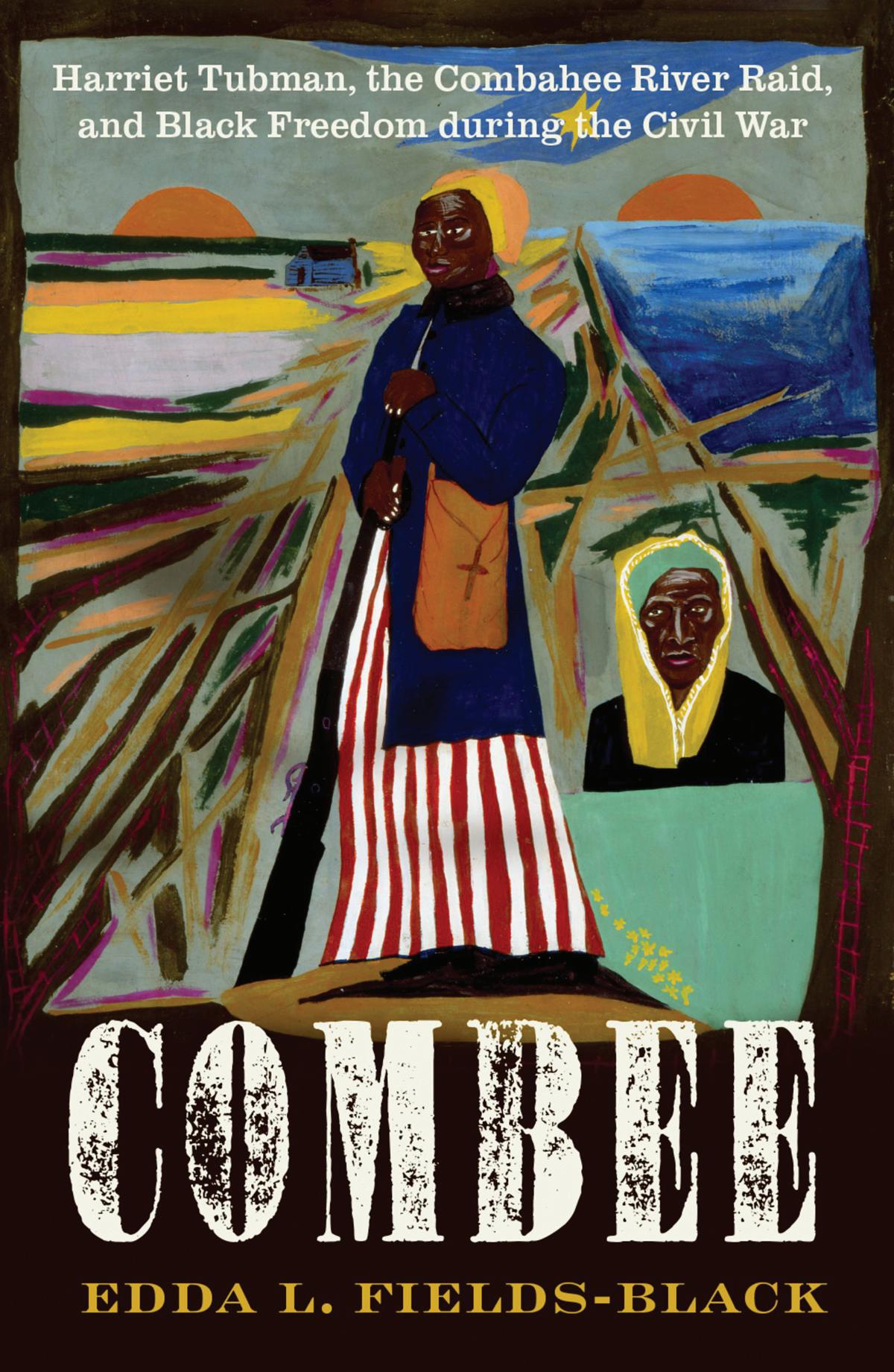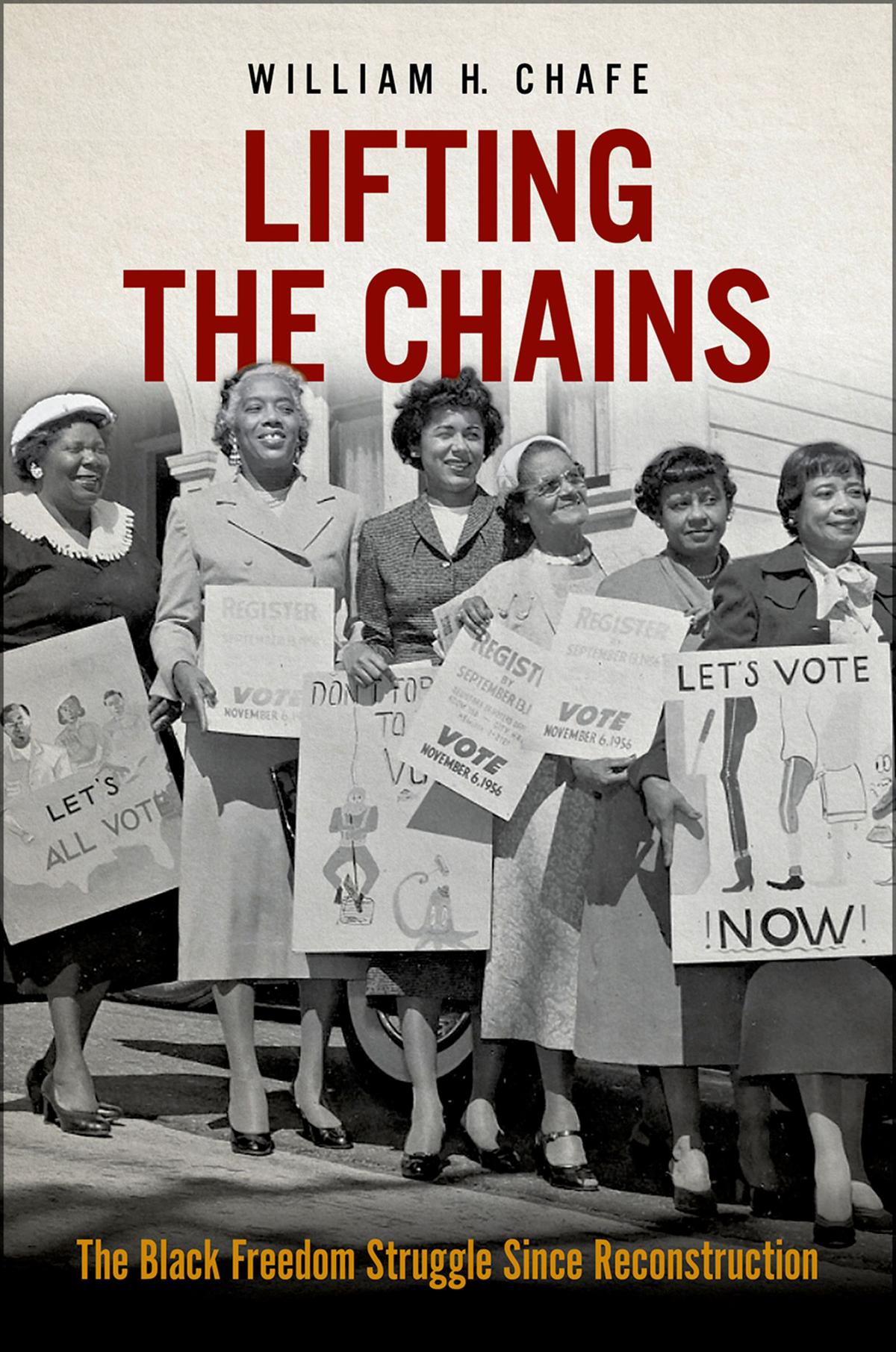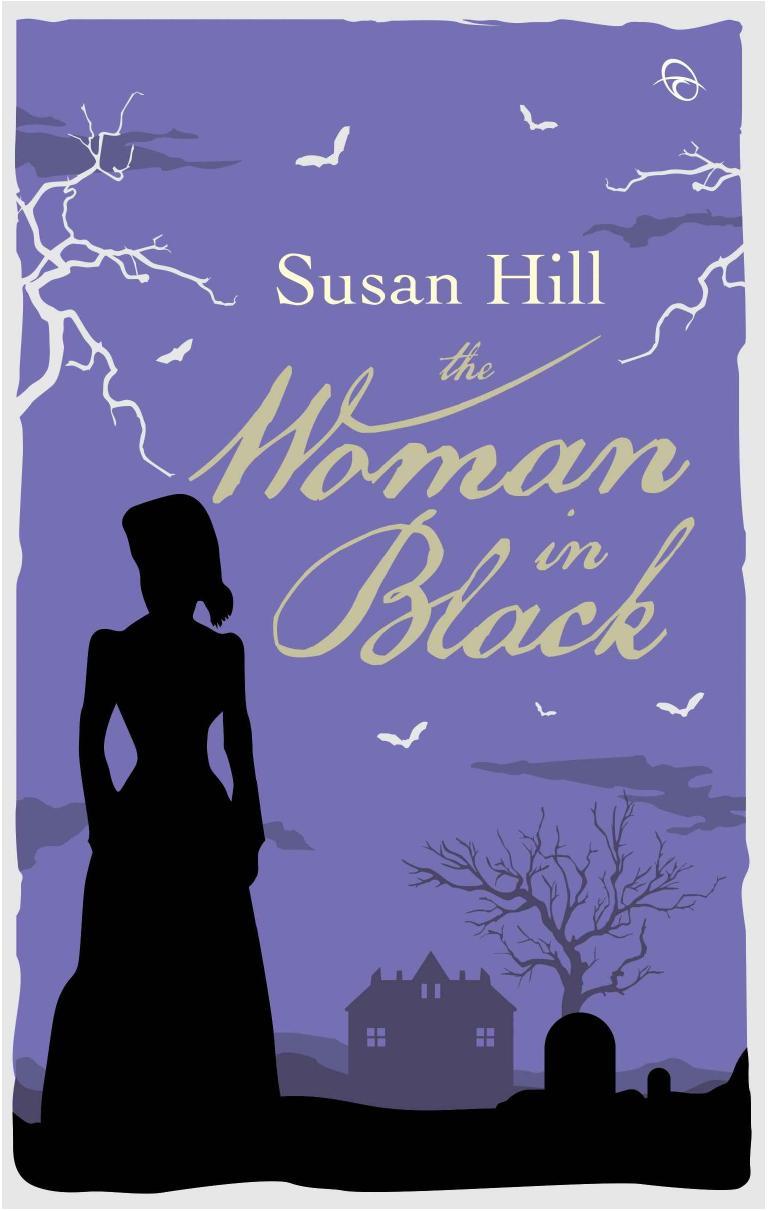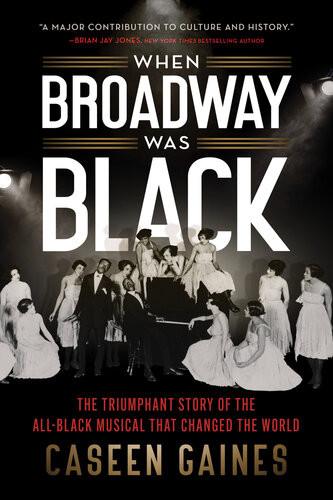COMBEE
HARRIET TUBMAN, THE COMBAHEE RIVER RAID, AND BLACK FREEDOM DURING THE CIVIL WAR
EDDA L. FIELDS-BLACK
Oxford University Press is a department of the University of Oxford. It furthers the University’s objective of excellence in research, scholarship, and education by publishing worldwide. Oxford is a registered trade mark of Oxford University Press in the UK and certain other countries.
Published in the United States of America by Oxford University Press 198 Madison Avenue, New York, NY 10016, United States of America.
© Edda L. Fields-Black 2024
All rights reserved. No part of this publication may be reproduced, stored in a retrieval system, or transmitted, in any form or by any means, without the prior permission in writing of Oxford University Press, or as expressly permitted by law, by license, or under terms agreed with the appropriate reproduction rights organization. Inquiries concerning reproduction outside the scope of the above should be sent to the Rights Department, Oxford University Press, at the address above.
You must not circulate this work in any other form and you must impose this same condition on any acquirer.
CIP data is on file at the Library of Congress
ISBN 978-0-19-755279-7
eISBN 978-0-19-755281-0
DOI: 10.1093/oso/9780197552797.001.0001
Support for the book was provided by Furthermore grants in publishing, a program of the J.M. Kaplan Fund.
Dedicatedto
AnnaL.RichardFrasier(1900–2002)
KatieRichardGilliard(1910–2016)
JonasFields(1929–2014)
whokeptmelinkedtomyancestralhome,sharedwithme whattheyknewofourfamily’sstories,andinspiredmeand generationstocome
Timeline
ANoteonNames
Foreword
1. Last Captives
2. Old Heads
3. Stolen Children
4. Prime Hands
5. Freedom Seekers
6. Pikins
7. John Brown’s “Men”
PART TWO THE PROVING GROUND OF FREEDOM
8. “Gun Shoot at Bay Point”
9. Broken Promises
10. Beaufort’s Boatmen
11. Two of Us
12. Forever Free
PART THREE THE COMBAHEE RIVER RAID 13. “A Pleasure Excursion”
14. Day Clean
15. “Some Credit”
16. “Great Sufferers”
PART FOUR “WE’S COMBEE!”
17. Reaping Dead Men
18. Charleston Siege
19. Closed His Eyes
Afterword Acknowledgments Appendixes Notes Index
Timeline
1632, June 30 Maryland Colony is established
1663, March 24 Carolina Colony is established
1672 Daniel Heyward emigrates to Carolina Colony from Derby, England
1678 Edward Middleton arrives in Carolina Colony from Barbados
1679 Arthur Middleton arrives in Carolina Colony from Barbados
1683 Benjamin Blake arrives in Carolina Colony from Bridgewater, England
1708 Enslaved people constitute the majority of Carolina Colony’s population
1730s Charles Lowndes arrives in Carolina Colony from St. Kitts
1750s Moses Kirkland arrives in Carolina County from Berwickshire, Scotland
1773 Peggy is the last documented slave vessel to disembark West African captives in Maryland’s ports
1775 Minus Hamilton is born
1784 Arthur Middleton bequeaths all of his lands on the south side of the Combahee River, including Newport Plantation, to his son Arthur Middleton
1785–1790 Ben Ross and Harriet “Rit” Green, the parents of Harriet Tubman, are born in Dorchester County, Maryland
1802 William Blake bequeaths Bonny Hall to his son Joseph Blake
1808 Act Prohibiting the Importation of Slaves takes effect in the United States
1808 Ben Ross and Harriet “Rit” Green marry
1820 Missouri Compromise
1822, March Arminta “Minty” Ross (later Harriet Tubman) is born
1827 Dr. William L. Kirkland Sr. acquires Rose Hill Plantation from his father-in-law, Dr. Thomas E. Lynah
1831, January 1 William Lloyd Garrison launches The Liberator
1836, February 16 William C. Heyward purchases Cypress Plantation from his father for $100,000 1830s–1841 Arminta “Minty” Ross’s sisters, Lina and Soph, and their children are sold away
1844 Arminta “Minty” Ross marries John Tubman and changes her name to Harriet Tubman
1845 Publication of Frederick Douglass’s Narrative ofthe Life of FrederickDouglass, an American Slave
1848 Seneca Falls Convention 1849, fall Harriet Tubman liberates herself and makes her way to Philadelphia, Pennsylvania
1850 Fugitive Slave Act goes into effect
1850 Harriet Tubman conducts her first rescue mission, bringing away her niece Kessiah and Kessiah’s two children
1851 Harriet Tubman likely meets Frederick Douglass in St. Catharine’s, Ontario
1851–1852 Harriet Tubman rescues her youngest brother, Moses, and two others; on a subsequent rescue mission, this time to Dorchester County; her husband, John Tubman, refuses to come with her, and she rescues another group of people and accepts God’s calling her to help liberate her people
1852 Harriet Tubman settles in St. Catharine’s, Ontario 1853, January 1 William L. Kirkland Jr. purchases 380 acres from Dr. Francis S. Parker and Sarah Parker, then combines it with other adjacent lands to assemble Longbrow Plantation
1854 Kansas-Nebraska Act becomes law
1854 Harriet Tubman rescues three more of her brothers, Ben, Harry, and Robert Ross, and Ben’s fiancé, Jane Kane, on Christmas Day, and takes them to Philadelphia, then to safety in St. Catherine’s, Ontario
1855–1860 Harriet Tubman makes several additional rescue missions to Maryland’s Eastern Shore attempting to rescue her sister, Rachel, and Rachel’s children; though she is unsuccessful at bringing away her sister, nieces, and nephews, she does bring more than sixty people safely to freedom and gave directions to approximately seventy others
1856 Election of James Buchanan as president 1856, May John Brown is appointed captain of the Liberty Guards of the First Brigade of Kansas Volunteers
1856, August 30 John Brown leads the Battle of Osawatomie
1857 Harriet Tubman rescues her elderly parents, Ben and Harriet “Rit” Ross
1857 James Montgomery leads Free Soil fighters across the border from Kansas into Missouri and defeats the much larger and better armed force of pro-slavery Missourians
1858 Harriet Tubman meets Franklin Sanborn in Concord, Massachusetts
1859 Harriet Tubman meets Reverend Thomas Wentworth Higginson in Boston
1859, October 16–18
John Brown raids the federal arsenal at Harpers Ferry, Virginia, and attempts to start a slave rebellion
1859 Harriet Tubman purchases a seven-acre farm in Auburn, New York, from William and Frances Seward 1859, November Wanderer is the last documented slave vessel to disembark West African captives in the Georgia and South Carolina Lowcountry 1859, December 20 James L. Parker buys Palmetto Plantation from Arthur M. Parker
1860, April Harriet Tubman plays a critical role in the escape of Charles Nalle in Troy, New York
1860, November Abraham Lincoln is elected president
1860, December John Izard Middleton, Williams Middleton, Dr. Francis S. Parker, and Judge Thomas Jefferson Withers sign the Order of Seccession
1861, March The South secedes from the Union
1861 General resolution about property is passed by South Carolina General Assembly
1861, May 3
General Benjamin Butler designates enslaved people who liberate themselves and make their way to US-occupied territory at Fort Monroe, Virginia, as “contrabands” of war
1861, July 21 First Battle of Bull Run
1861, November 7 Battle of Port Royal, the “Great Skedaddle,” and “Gun Shoot at Bay Point”
1862, March Edward L. Pierce arrives in Port Royal with first group of northern teachers, missionaries, and superintendents to start the Port Royal Experiment
1862, March Five enslaved people escape the prison house of bondage on William L. Kirkland Jr.’s Rose Hill Plantation and find employment with the US Army quartermaster in Beaufort
1862, March USS McClellan arrives in Beaufort from Fort Pulaski and is unloaded by freedom seekers who liberated themselves from enslavement on lower Combahee rice plantations owned by William L. Kirkland Jr. and managed by Walter Blake
1862, May 9
General David Hunter declares martial law in coastal South Carolina and Georgia and emancipates enslaved people in these
two areas
1862, May 25 Harriet Tubman begins her service for the US Army, Department of the South, as a spy, scout, nurse, and cook
1862, early June General David Hunter begins enlisting Black soldiers in Hunter’s Regiment
1862, June 26 and 27 US Navy raids Arthur Blake’s South Santee Rice Plantation
1862, early July US Navy sends USS Hale up the Combahee River, gathering intelligence about it and the Ashepoo River
1862, July 14 General Act of 1862 provides pensions for veterans disabled because of military service as well as for widows and dependents of soldiers killed in the line of duty
1863, January 1 Emancipation Proclamation celebration at Camp Saxton
1863, January 31 1st South Carolina Volunteers Regiment is organized
1863, March 13 54th Massachusetts Regiment is organized
1863, April–May First siege of Charleston
1863, May 22 2nd South Carolina Volunteers Regiment is organized
1863, June 2 US Army raids rice plantations on the lower Combahee River (Combahee River Raid)
1863, June 3 Harriet Tubman gives a speech to the Combahee refugees at a church in downtown Beaufort
1863, June 3 One hundred fifty men who liberated themselves in the Combahee River Raid enlist in the 2nd South Carolina Volunteers Regiment
1863, June 3 Harriet Tubman testifies against Private John E. Webster, superintendent of contrabands and a white man, at his courtmartial
1863, July 1 William C. Heyward applies for compensation from the Confederate government for losses at Cypress during the Combahee River Raid
1863, July 1–3 Battle of Gettysburg
1863, July 18 Battle of Battery Wagner
1863, August Second siege of Charleston
1863, August Harriet Tubman takes care of wounded Black soldiers and organizes relief support from the local Black community after the loss at the Battle of Fort Wagner
1863, September 7 Capture of Battery Wagner
1863, September 17
1863, November 15
Joshua Nicholls applies for compensation from the Confederate government for losses at Longbrow during the Combahee River Raid
William L. Kirkland Jr. applies for compensation from the Confederate government for losses at Rose Hill during the Combahee River Raid
1863, December Major B. Ryder Corwin of the 2nd South Carolina Volunteers is court-martialed
1864, January 24
Charles T. Lowndes petitions the South Carolina State Senate and House of Representatives for exemption from his 1863 taxes because of his losses in the Combahee River Raid 1864, February 20 Battle of Olustee
1864, March 26
General Order No. 44 officially organizes the 2nd South Carolina Volunteers as the 34th Regiment of the US Colored Troops 1864, May 28 Battle of Haw’s Shop
1864, June Harriet Tubman leaves Beaufort, South Carolina, on furlough, intending to return after checking on her aged parents
1864, June 17 Wedding of multiple Black soldiers and their wives “under the flag” at Pigeon Point
1864, June 19
William L. Kirkland Jr. dies of injuries suffered at the Battle of Haw’s Shop 1864, September 23
Resignation of Colonel James Montgomery as commander of the 2nd South Carolina Volunteers
1864, November 15–December 21 Sherman’s March to the Sea
1865, January 1
General Sherman’s Special Field Order No. 15 is delivered
1865, February 18 Charleston surrenders to 21st US Colored Troops Regiment (formerly the 3rd South Carolina Volunteers)
1865, April 9
General Robert E. Lee surrenders the Confederate Army of Northern Virginia to General Ulysses S. Grant at Appomattox Courthouse
1865, April 15 President Abraham Lincoln is assassinated
1865, April Harriet Tubman gives a speech to Black US Colored Troops veterans at Camp William Penn in Cheltenham, Pennsylvania 1866, February 6 Cypress Plantation is restored to William C. Heyward’s heirs
1866, February 28 2nd South Carolina Volunteers muster out in Jacksonville, Florida
1865, July Harriet Tubman is appointed nurse or matron of the Colored Hospital at Fort Monroe, Virginia 1865, midOctober Harriet Tubman returns to Auburn, New York, concluding her military service for the US Army, Department of the South 1865, December 6 Thirteenth Amendment to the US Constitution is ratified
1866, April 28
Charles T. Lowndes sells Oakland Plantation to Rawlins Lowndes 1868 Harriet Tubman requests back pay from the federal government for her service during the Civil War
1868, July 9 Fourteenth Amendment to the Constitution is ratified 1868, November 9
Commissioner of Equity Benjamin Stokes sells William L. Kirkland Jr.’s Rose Hill Plantation to John D. Warren
1869 Sarah Bradford publishes her first biography of Harriet Tubman, Scenes in the Life ofHarriet Tubman
1869 Harriet Tubman marries Nelson Davis in Auburn, New York 1869 Colonel Thomas Wentworth Higginson publishes Army Life in a BlackRegiment
1870 Sarah Bradford publishes her second biography of Harriet Tubman, Harriet Tubman: The Moses ofHer People 1870, February 3 Fifteenth Amendment to the Constitution is ratified
1872, December Sheriff John K. Terry sells Paul’s Place to Lucien Bellinger
1874, March 2 Charles H. Simonton, referee of William Blake’s estate, sells Bonny Hall to J. Bennett Bissell
1876, May Laborers in the Combahee rice fields go on strike
1879, March 4 The Equity Court sold William C. Heyward’s Cypress Plantation to Sarah H. Bissell
1887, August 7
1887, December 20
Congress passes law to establish the pension system
Langdon Cheves and other executors of Henry A. Middleton’s estate sell Newport Plantation to Harriot Middleton, Anne Hunter, Isabella Cheves, and Allice Middleton
1888, October 14 Nelson Davis, Harriet Tubman’s second husband, dies
1888, October Harriet Tubman applies for a widow’s pension for the Civil War service of her second husband, Nelson Davis
1890, June 29 Congress passes Dependent and Disability Pension Act 1895, October Harriet Tubman’s widow’s pension claim is approved, granting her a monthly pension of $12
1895, October 31 William Drayton dies
1896 Harriet Tubman buys at auction a twenty-four-acre lot adjacent to her home in Auburn, New York, with the goal of establishing a home for sick and needy African Americans
1899, February 28 Harriet Tubman receives a pension increase to $20 per month for her service as a nurse during the Civil War
1913, March 10 Harriet Tubman dies
1914 Joshua Nicholls’s heirs receive $33,450 for the loss of his life interest in Longbrow Plantation as a result of the Combahee River Raid
1923, September 27
Friday Hamilton dies in New York City
2021, June Harriet Tubman is finally recognized for her service as a spy, scout, and leader of a group of spies, scouts, and pilots during the Civil War when she is inducted as a full member into the US Military Intelligence Hall of Fame
ANote on Names
In many ways this book is about naming, in that it uncovers the identities of people who were heretofore not identified. For many, this account represents their first appearance in the historical record. The names given to or assumed by enslaved or formerly enslaved people reflect a wide variety of traditions and practices, making consistency in the historical record challenging for anyone trying to set the record straight. There are also multiple spellings of the names from a wide variety of sources. In recovering the historical actors’ stories, I have done the very best I can to standardize the spellings, choosing one spelling (usually based on government-issue documents when available or attestations of their names from later in their lives—that is, after freedom). Variants still remain. In addition, I have tried to retain the original spellings in the primary source documents quoted in the text and cited in the endnotes.
Foreword
On June 20, 1863, less than two weeks before the Battle of Gettysburg, the Wisconsin State Journal reported with great excitement that earlier in the month Colonel James Montgomery of the US Army and his “gallant band of 300 Black soldiers” had “dashed” into what was widely considered a breadbasket of the Confederacy, the rice plantations along the Combahee River in South Carolina, destroyed millions of dollars of property and mansions along fifteen miles of the river, and struck fear into the heart of the rebellion. Moreover, it had done all this “under the guidance of a Black woman.” It gave this Black woman and the Black soldiers “some credit for the exploit,” which was now being called the Combahee River Raid.1
This woman was none other than Harriet Tubman, the fugitive slave known as “Moses.” To Sarah Bradford, one of her biographers, Tubman recalled that she had “nebber see such a sight” as early on the morning of the Combahee raid: hundreds, if not thousands, of Blacks running for their lives—and their freedom—when they heard the whistles of the US Army gunboat John Adams and the armed transport steamer Harriet A. Weed coming up the river. First they peered out “like startled deer” from their hiding places in the rice fields and slave cabins. Then freedom seekers rushed to the boats with their children and belongings. They came loaded down with bags on their shoulders, baskets on their heads, young children struggling to keep up, pigs squealing, chickens squawking, and babies crying. Tubman told an interviewer decades after the war, “These here, puts me in the mind of the children of Israel, coming out of Egypt.”2
Tubman remembered it as a chaotic scene. One mother carried a pail of rice on her head that was still smoking, as if just removed from the fire. Children trailed behind her, clinging to her dress. Another child was perched on her shoulders, gripping her forehead from behind and digging a hand in the smoking rice pot: breakfast in flight. On her back, the woman carried a bag with a pig in it. Another woman brought two pigs, one white and one black. Tubman remembered the white pig was named Beauregard and the black pig Jeff Davis. She herself brought both Beauregard and Jeff Davis onboard so that the woman, who was clearly weak from illness, could carry her child onto the boat. Some women fled with twins hanging around their necks. Tubman thought she had never seen so many sets of twins in her life. They all came rushing to the Union gunboats, followed close behind by enslaved drivers who lashed them with whips, trying to get them to go back to the slave quarters and rice fields. Then the drivers, too, got on the boats.3
The Union commanders, who were white, gave the orders for the Black soldiers who had gone ashore—as well as others assisting in the raid, including Tubman—to “double-quick” back to the boats. Running, Tubman tripped on her long dress and fell. In frustration she tore her garments so that she could move freely. When she got back on the boat, her dress was little more than shreds.4
By now hundreds of freedom seekers stood on the riverbanks, waiting to board the small rowboats designated to transport them from the shore to the gunboats. The rowboats filled up quickly. Another transport steamer, the Sentinel,had earlier run aground on a sandbar and could not be dislodged; it had been abandoned for the time being. Without that third vessel available to transport everyone who had rushed to the riverbank, most freedom seekers were not able to bring on board any of the personal effects they had laboriously toted to the riverbanks. In fact, they could not take anything with them except the clothes on their backs. On the landing, they left an assortment of clothes, pots, kettles, baskets, bolts of cloth, hats, and shoes, everything they possessed in the world. Nevertheless, the loss of these possessions was a small price
to pay for a way out of what Frederick Douglass called the “prisonhouse of bondage.”5
Those who hadn’t yet boarded held on to the sides of the rowboats, preventing the boats from taking off without them. They must have known this would be their only opportunity to leave, and these boats the only way out. Though the crews smacked their hands with the oars to get them to let go, they were determined to hold on. The entire mission came close to disaster.6
By this point the sun was coming up and Montgomery’s mission would be in full view of any Confederate forces that might have been in the area. Any delay could have given the Confederate forces enough time to regroup and attack, slaughtering everyone, soldiers and freedom seekers alike. Confederate pickets could have shot them off like sitting ducks. Every second counted.7
Someone had to calm the desperate freedom seekers. Colonel Montgomery implored Tubman, or “Moses,” as he called her, to “speak a word of consolation to your people.” Decades later, Tubman told an interviewer that they were no more her people than they were Montgomery’s—“only [they] was all Negroes.” To Sarah Bradford she recalled that those she encountered in coastal South Carolina were foreign to her: “Why der language down dar in de far South is jus’ as different from ours in Maryland as you can tink.” In fact, Tubman and the Blacks in coastal South Carolina spoke different varieties of a Creole dialect that was evolving among enslaved and free Black people in the Atlantic basin. Tubman spoke a Chesapeake Creole that was influenced primarily by English and other European languages and thus likely revealed fewer African inflections. Freedom seekers in coastal South Carolina spoke a Lowcountry Creole that continued to incorporate elements of West African languages up until almost the Civil War. A similar creolization process created the two dialects, but different inputs put into different physical and social environments over time had resulted in different linguistic products. Thus, Tubman and the freedom seekers had difficulty understanding each other. As Tubman put it, “Dey
laughed when dey heard me talk. An’ I could not understand dem, no how.”8
But why Tubman was in the South—in South Carolina, where the Civil War began—was unambiguous. She had known since the passage of the Fugitive Slave Act of 1850 that there was “gwine to be war.” In 1862, she decided to do her part, risking her freedom, her safety, and her very life. She was ready to go to war for people she did not know and whose language and culture she could not even understand. However, she knew that they all had one thing in common: the pursuit of freedom.9
The centerpiece of Tubman’s efforts was the Combahee River Raid. In the course of six hours, she, Montgomery, the 2nd South Carolina Volunteers, and one battery of the 3rd Rhode Island Heavy Artillery attacked no fewer than seven rice plantations. They destroyed $6 million in property, including homes, stables, storehouses, and other outbuildings, as well as millions of bushels of rice. They confiscated hundreds of heads of livestock, including eighty or ninety horses. Most of all, they set in motion the freedom of 756 enslaved people, Confederate planters’ most valuable “possessions.” The US forces did not lose a single life. One could argue that they executed the largest and most successful slave rebellion in US history.10
Most know that Harriet Tubman escaped enslavement, led herself and more than sixty others out of bondage via the Underground Railroad—giving about seventy more people detailed instructions on how to get to freedom—and became a suffragist, fighting to expand voting and civil rights to those who had been excluded from them. Though some of Tubman’s biographers, including Earl Conrad and Kate Larson, have written about Tubman’s Civil War experiences, her work for the US Army’s Department of the South during the Civil War remains the least-studied period of Tubman’s otherwise well-studied life.
Tubman left Boston in 1862 and traveled to Port Royal, South Carolina, one year into the war, shortly after the port city had been liberated by Union forces. She embedded herself in the Beaufort Black refugee community, acting as a nurse, cook, spy, and scout for the US Army. There she recruited the men who piloted Colonel Montgomery, the 2nd South Carolina Volunteers, and the 3rd Rhode Island Heavy Artillery up the Combahee River and onto the plantations in the Combahee River Raid.
We know this because there are records of her service. Tubman’s second husband, Nelson Davis, served in the 8th Regiment, Company C, of the US Colored Troops (USCT) from September 25, 1863, to November 10, 1865. After Davis’s death on October 14, 1888, Tubman received a widow’s pension of $8 per month for her husband’s service. Her testimony is recorded in a report from the House Committee on Invalid Pensions submitted to the whole House of Representatives and requesting an increase to $25. Tubman’s application for a widow’s pension—similar to others in the massive collection of documents housed in the National Archives in Washington, DC—reveals that she worked as a “nurse and cook in hospitals and a commander of several men (eight or nine).” She therefore had a “double claim” on the US government—one for a widow’s pension and the other for her own military service.11
The Combahee River Raid was Colonel Montgomery’s most successful Civil War expedition. In fact, it was one of the most successful Union expeditions of the entire Civil War in terms of property damage and number of enslaved people freed. Yet aside from Jeff Grigg’s study, The Combahee River Raid: Harriet Tubman and Lowcountry Liberation, very little has been written about it. Why? The answer is that Tubman and the men and women she freed were all illiterate. Tubman never wrote her own account of the raid. She told parts of it to abolitionist friends—like Sarah Bradford, mentioned earlier and supporters, who wrote it down for her. Taken together, all these accounts provide evidence of her Civil War activities in coastal South Carolina, where, despite language and
cultural differences, she gathered from the Lowcountry Creoles the intelligence the US military commanders needed.
However, many of the critical elements of the Combahee story have been largely absent. Who were these people who gained their freedom? The majority of plantation records were destroyed when the plantations were burned (Colonel Montgomery’s men spared only one on that stretch of the river). Incinerated were slave lists, plantation daybooks, diaries, ledgers, and business and personal correspondence. The Confederates had moved records for Beaufort and Colleton Counties to Columbia, South Carolina, during the war to protect them from the Union. Ironically, those burned in February 1865, when General William T. Sherman’s army marched through the Carolinas (though Charleston County’s archives survived). Thus, many documents filed in municipal archives located in the parishes where the raid took place are also lost forever.12
However, papers from other rice plantations in the area owned by the same planter families or their relatives help paint a picture of life on the lower Combahee. Moreover, planters whose property was burned during the raid applied for compensation from the Confederate government, cataloguing their losses. (One planter was a double-dipper, as I learned. He applied for compensation from both the Confederate and US governments.) In addition to buildings and equipment, bushels of rice, livestock, and personal possessions, the affidavits listed the names of the enslaved men, women, and children who seized their chance for their freedom on June 2, 1863. A number of planter families filed marriage settlements, wills, bills of sale for slaves, and court proceedings in Charleston or kept private collections that survived. Some planters scrawled back-of-theenvelope lists of the enslaved people they had lost in the raid or who had moved out of the area before and after June 2, and these, too, have survived. Finally, there are surviving letters in which planters, their family members, and neighbors lamented and commiserated about their losses. Still, while these help with names, family connections, and ages, they reveal too little about the lived experiences of enslaved people and their communities.
So telling the Combahee story presents challenges. What we have most of all, however, are the pension files, which allow us to reconstruct the story of Tubman’s Civil War service, the Combahee River Raid, and the hundreds of husbands, wives, siblings, in-laws, cousins, childhood friends, neighbors, and sweethearts who all ran for their lives and their freedom when the steamboat whistle blew. They constitute the foundation of the story that follows.
The United States Civil War Pension Files offer a fresh perspective on Harriet Tubman’s Civil War service, putting this chapter of her life in the context of the Combahee River Raid, the freedom seekers who liberated themselves as a result of it, the Black regiments, and the evolution of a new Creole culture and language. They are an underutilized source. Like slave narratives (often dictated by formerly enslaved people to abolitionist amanuenses) and interviews collected among formerly enslaved people by the Federal Writers’ Project from 1936 to 1938, the US Civil War Pension Files provide a window into the intimate lives of enslaved people, their families, and communities.13
Under the General Act of 1862, Congress created the US Pension Bureau to evaluate pension claims and administer pension benefits to white and Black US veterans disabled by military service and to the widows and dependents (children under sixteen at time of their father’s death and adult dependents) of men killed in action. The Dependent and Disability Pension Act of 1890 greatly expanded the pension system, making disabled veterans eligible for pensions whether or not their disabilities were related to military service and their widows and dependents eligible for pensions whether or not the veteran’s death was related to his military service. Successfully navigating the pension system was expensive, time-consuming, and frustrating. It presented untold challenges for African American Civil War veterans, the majority of whom were born enslaved and remained illiterate all of their lives. Roughly 83,000, slightly more than 42 percent, of African American veterans who applied for
pensions were approved. Tens of thousands more veterans, widows, and dependents’ applications were not approved and/or they did not live long enough to collect their benefits.14
USCT veterans and their widows applied for pensions for their Civil War service through local attorneys mostly located in Beaufort and Colleton Counties and attorneys in Washington, DC. Veterans and widows were required to produce many different kinds of documentation, including the soldier’s discharge papers and a marriage certificate. The documents had to be notarized by a local notary in order for a successful pension application to be filed. The notaries also took affidavits from veterans, widows, comrades, “Old Heads” (the oldest people in the community, who knew everyone else’s business), neighbors, church members, and others who had known the veteran, the widow, and their children for much of their lives. The Bureau of Pensions sent special examiners in to investigate when the process went awry, as it frequently did, because Black veterans’ applications often lacked the necessary documentation (marriage certificates, birth certificates, even discharge papers) and required depositions from many more witnesses to verify the information. The testimonies were often contradictory. So special examiners took more affidavits from witnesses, attempted to assess whose testimony was most reliable, wrote a report back to the Bureau of Pensions, and made a recommendation whether the veteran, widow, or dependent should be granted a pension or the veteran an increase in pension benefits because of disability.15
Once the veteran or widow had secured pension benefits, they had to visit a notary every quarter to execute their pension vouchers and collect their monetary benefits. Four times yearly, many traveled from the towns of Dale and Sheldon to downtown Beaufort, from St. Helena Island to Frogmore (also in Beaufort County), or from Green Pond to Walterboro (in Colleton County) to pick up mail addressed to them and delivered to the general store, including their mail from the Bureau of Pensions. General stores were the one-stop shops of small southern towns in the post–Civil War era. Located in the center
of town, they sold everything, including groceries, clothing, household goods, tools, and seed, to white and Black customers in the local area. In addition, the notary public’s office was often located at the back of the store. This being Reconstruction, the general store had two doors and the office two rooms, and that segregation endured through the period of Jim Crow.16
White farmers browsed the wares at their leisure, catching up on the week’s news with the store clerk and fellow white customers, and transacted business with the notary public in the main office. For them, the general store was a central social spot during the evening hours. Black customers, on the other hand, came in the back door and stated their business. If shopping, they requested items and had to purchase them without inspecting them or trying them on. If they came to transact business with the notary public, including pension business, they waited in a back room, often a storeroom, for the notary to finish attending to the needs of white customers. USCT veterans who had fought courageously and proudly for the Union, their freedom, and the freedom of others entered through the back door and sat in the back room waiting for the notary to have the time (or take the time) to notarize their pension vouchers and count out the payments due for their service.17
When called upon, the veterans and widows held up one hand, swore to tell the truth, signed—usually with a mark, as only a handful could sign their names—and had their signature or mark witnessed, usually by other veterans and/or widows sitting in the back room. If the pensioner needed to have a letter written or a form filled out to apply for a disability pension or an increase, the notary could perform all of these tasks in the same visit. Most veterans came alone and met their comrades at the general store; most widows did not come alone, instead accompanied by a male relative (brother, brother-in-law, son, grandson) or one of their husband’s comrades. During these quarterly reunions, veterans and widows stayed abreast of one another’s health, family, and financial circumstances, identified who among their community needed help, and pledged to keep in touch until they met again.
If a veteran or widow was applying for a pension, disability, or an increase, they often brought witnesses with them, in which case they all sat together in the back room and waited. If the witnesses did not come with the veteran or widow, they could come separately for the notary to take their affidavits. If the notary was attending to white customers, quite possibly the USCT veterans, widows, and witnesses would have to wait for a considerable amount of time, and if the notary did not have time that day, they would have to travel home or spend the night in town and come back another day, all at their own expense, to try their luck again. The costs associated with applying for a pension—particularly traveling to and from rural areas to attorneys, notary publics, and surgical boards, and paying notary publics to read, explain, and fill out forms, take depositions, and notarize documents—were prohibitive for many veterans and widows.18
In one trip, veterans and widows could execute and cash their pension vouchers, as well as spend their quarterly pension benefits on foodstuffs, clothing, shoes, and supplies for themselves, their families, and their households. Veterans and widows frequently left discharge papers and other important documents on file with the notary public with whom they executed their quarterly vouchers or at the general store where they did their shopping, so that the documents would not be destroyed by rats, fire, or water. Veterans and widows had to testify that they did not pledge their pension certificates to the storekeepers who kept their pension papers on file and/or where they collected their quarterly benefits, and storekeepers had to testify that they did not require veterans and widows to pledge their certificates in order to be granted store credit. However, it’s highly likely that some of them were indeed leaving their pension papers at the stores as collateral, even though they told the pension officers they didn’t and the practice was illegal under federal law. As the Federal Writers’ Project interviews demonstrate, it is no surprise that poor Black people—especially ones dependent on government benefits—told federal interviewers
what they thought the government officials wanted to hear, particularly about slavery.19
Formerly enslaved people told their stories to notary publics, pension attorneys, and officials from the Department of the Interior’s Bureau of Pensions. Veterans who enlisted in the US Army after the Combahee River Raid told their story to apply for Civil War pensions; they told it to apply for increases in their pensions if they became disabled or had reached the age of seventy. When one of their comrades died, they told his story, and theirs in relationship to his, to be sure his widow and/or minor children received pension benefits. Widows, like Harriet Tubman Davis, applied for their husbands’ pension benefits after their husbands died. After a comrade or widow died, their story was told to ensure that whoever nursed him or her in their last days and paid the burial expenses would receive accrued pension benefits to defray the costs. Moreover, the comrades, friends, and neighbors who knew the veteran, widow, and/or minor children during enslavement and after discharge told their stories as well.
When notary publics exercised best practices, they recorded witnesses’ testimony given under oath. On a separate document, they rated the reliability of the witnesses; sometimes they asked postmasters to weigh in on the witnesses’ standing in the community. Occasionally special examiners stepped out of their roles as neutral scribes and wrote their real feelings about a witness in a deposition or a special examiner’s report. It is not surprising that when they let their guard down, special examiners admitted they thought Black people were ignorant. Many of special examiner James A. Bell’s colleagues would have agreed with his judgments of the veterans, widows, and neighbors who lived on the isolated and unhealthful lands along the Combahee River. He pronounced that Sina Bolze Young Green had once “belonged to a rice planter” and that people who had been held in bondage by rice planters were among the “most ignorant and degraded.” He continued by saying that those who had been enslaved on Lowcountry rice plantations and freedpeople in general had lost the morality they possessed in
bondage by coming into contact with the world in freedom. Notary public N. G. Moore articulated how his colleagues likely felt when he wrote to his superiors to note that Moses Simmons’s first wife’s name was Christy, not Cushie as it had appeared previously in Moses’s pension file, and opined that “these people talk very indistinct and it is very hard to write from pronunciation. They are all negroes and very ignorant. This explains the difference in the name as it appeared.” Thus, most notary publics and special examiners filtered witnesses’ testimony through their language, Standard English, obscuring the witnesses’ Gullah Geechee dialect. The Gullah Geechee are the descendants of Blacks enslaved on Lowcountry rice, Sea Island cotton, and indigo plantations from the Cape Fear River in North Carolina to the St. John River in Florida and in the port cities of Charleston, Beaufort, Savannah, and Jacksonville.20
Inconsistencies in witnesses’ stories may have contributed to special examiners’ negative opinions about USCT veterans and their widows, though the rampant discrimination and racism among whites during Reconstruction and in the Jim Crow South were surely the root cause. When veterans, widows, and neighbors misrepresented information, such as their marital status or nature of their disability, the special examiners usually unearthed the truth, usually with help from the Old Heads. In 1911, Fannie Lee Green Simmons, widow of Moses Simmons, testified that “every old head on this plantation knows that I had no wife [sic] between Caesar [Green] and Moses [Simmons].” The Old Heads knew who was married before the war, who had remarried even though their first spouse was still living, who had never married even though they lived together as husband and wife, who told members of the community to say they were or were not married when the pension officer came around, and whose children were born out of wedlock. They did not hesitate to tell what they knew when the pension officers showed up. As the decades wore on, there were always Old Heads around who could tell the tale. The men who enlisted and the women they married all became Old Heads if they just kept living. It was the special examiners’ job to find the Old Heads and ask the
right question. Occasionally, witnesses told pension officers about the night when Colonel Montgomery and the “Yankee gunboats” came up the river and “took all of the colored people off” to freedom.21
As noted, the US Civil War Pension Files hold a treasure trove of historical information about enslaved people’s lives. Take, for example, the file—255 pages in all—of my great-great-great-uncle Jonas Fields, who enlisted in the United States Colored Troops, 128th Regiment, Company C, in April 1865, not long before the war ended. Medical examinations in Jonas Fields’s pension file state that he was “height 5 feet 8 inches; complexion Dark; color of eyes Black; color of hair Black.” For African American Civil War soldiers, that is the extent of what the pension files provide of their physical descriptions, except for their injuries and disabilities. It is enough for me to imagine that Jonas was taller than most, dark, and lean, like the men in my granddaddy’s family. Like his namesake Jonas Fields, who was my grandfather’s first cousin, my great-great-great-uncle likely had a back strong enough to work on the railroad (a line of work the Fields men followed south to Miami), arms strong enough to need only one to scoop his well-proportioned wife out of the baptismal pool and carry her up the stairs (as family and members of the Baptist Church in Ruffin, South Carolina, witnessed Cousin Jonas do), and hands big enough to grip the top of an errant child’s head before we got away.22
My uncle Jonas testified in June 1902 that he had been born on Keans Neck in Beaufort, and that Dr. James Robert Verdier had held him in bondage. Jonas also revealed the names of his parents, Anson and Judy Fields (my great-great-great-great-grandparents), noting that “their owner was my owner.” In his 1914 deposition, Emmanuel Gettes testified that Jonas had been a house slave; he had waited on Verdier and his son-in-law, a Mr. Sams, who was certainly Berners Bainbridge Sams. Jonas “used to travel about during slave times,” even to the neighborhood of the Heyward
Plantation, where he became acquainted with his future wife, Nellie Small. On that same day in 1914, Phoebe Washington testified that she was Jonas’s sister and that they had a brother named Hector, my great-great-great-grandfather. Verdier, she said, had enslaved both Hector and Jonas Fields; “Mrs. Sams,” who was Sarah F. Verdier Sams (Verdier’s daughter), held Phoebe in bondage. During the Civil War the Verdiers evacuated the male and female house slaves they held in bondage at their home in downtown Beaufort to different locations, separating Jonas from his first wife, Margaret, whom the Verdiers also held in bondage. Hector, a field hand on a rural plantation, had already run away and joined the US Army. After the Civil War, Jonas testified that he “went into the Heyward neighborhood to work in the rice fields” near the small town of White Hall, and there married Nellie. White Hall is where my father was born. I often visited cousins on my paternal grandfather’s side when I was a child, and many in my family still live there.23
When Jonas arrived in White Hall after the war, he worked as a coachman for Barnwell Heyward, grandson of Nathaniel Heyward (the Heywards had been one of the Combahee’s most prominent rice families before the war), and for Barnwell’s great-uncle Colonel Alan Izzard, and he lived next door to Nellie for a few years before they married. Nellie testified Nathaniel Heyward had held her in bondage. Stephen Graham, who was younger than Nellie, testified in his pension file that he had been enslaved on the same Heyward plantation as Nellie and held in bondage by Blake Heyward, another of Nathaniel Heyward’s grandsons. Jonas and Nellie lived in White Hall until January 17, 1891, when they moved to Lady’s Island, where my uncle died on September 22, 1911. On June 25, 1902, Jonas testified that his brother Hector Fields lived on Lady’s Island. Affiants testified that Verdier had also held in bondage Margaret Fields, Jonas’s wife during enslavement, John Bryan, and Clara Gillison, and that the Heywards, Nathaniel and Blake, had enslaved Moses Youngblood, Nellie Small’s fiancé or possibly her first husband, and a man named Stephen Graham. With one US Civil War pension file, I discovered ancestors in my Fields family line whose
names were previously unknown. This facilitated my reconstruction of the beginnings of two enslaved communities.24
The 162 pension files of the men who escaped enslavement in the Combahee River Raid and joined the USCT are like pieces of a jigsaw puzzle. Each affidavit, letter, and special examiner’s report plays a part in constructing a greater picture. Yet that picture is partial. For example, these pension files are not representative of all of the enslaved people who escaped in the Combahee River Raid. Instead they reflect only the men who joined the Union Army immediately following the raid, the women who married them, and the neighbors and friends who knew them and testified on their behalf. The overwhelming majority of these people were illiterate, and very few left written accounts. Nonetheless, together with the planters’ documents, I will use the pension files to reconstruct the enslaved communities and identify those who ran to the Combahee River and got on the US Army gunboats. Partial as it is, this picture reflects the experiences of the freedom seekers who escaped during the Combahee River Raid and the newly liberated men turned soldiers who freed them, allowing them all to tell the story of the raid in their own words.
I never intended to write a book about Harriet Tubman or about the Civil War, especially not one involving some of my ancestors. My scholarly focus has always been rice. I’ve studied peasant farmers who engineered mangrove rice farming technology in the Upper Guinea Coast (West Africa) during the precolonial period and enslaved Blacks forced to grow rice on coastal South Carolina’s tidal rice plantations. However, Tubman and the Combahee River Raid isa rice story; indeed, it is one of the best rice stories I have ever come across. As much as possible, I will tell this rice story using sources by and about the Combahee planters impacted by the raid and their family members. After all, this raid didn’t happen in Georgetown, on the Santee, or on the Savannah River; it happened on the Combahee, with its localized identity and tight-knit enslaved and












